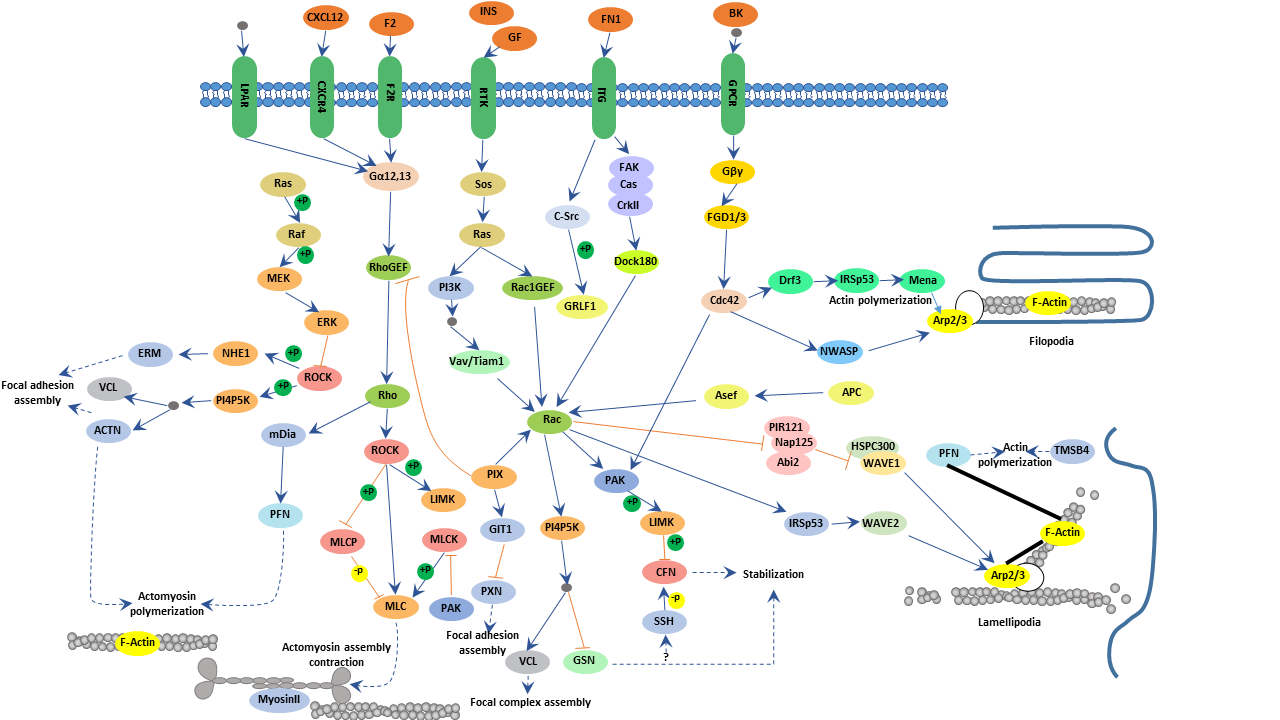
What is Actin Cytoskeleton?
The actin cytoskeleton is a dynamic network composed of actin polymers and associated actin binding proteins. The actin cytoskeleton was first isolated as a component of the actomyosin complex in muscle cells and was later identified as a component of all eukaryotic cells. It is highly conserved throughout evolution.
What is the Function of Actin Cytoskeleton?
The actin cytoskeleton is a primary determinant of cell shape and motility. Combining with the other parts of the cytoskeleton including intermediate filaments and microtubules, the actin cytoskeleton is mainly responsible for mediating various important cellular processes such as cell structural support, axonal growth, cell migration, organelle transport and phagocytosis.
For the actin cytoskeleton to perform these functions, its organization requires tight regulation and many of the associated actin binding proteins are therefore probable targets of the cellular signaling pathways that modulate the assembly of actin.
Regulation of Actin Cytoskeleton
Signaling to the cytoskeleton through G protein-coupled receptors (GPCRs), integrins, receptor tyrosine kinases (RTKs), and numerous other specialized receptors, such as the semaphorin 1a receptor PlexinA, can lead to diverse effects on cell activity, including changes in cell shape, migration, proliferation, and survival.
Intracellular regulation of the cell’s response to external cues occurs through a large number of signaling cascades that include the Rho family of small GTPases (Rho, Rac, and Cdc42) and their activators, guanine nucleotide exchange factors (GEFs), their downstream protein kinase effectors, including Rho-kinase/ROCK and p21 activated kinase (PAK), as well as through direct binding of the GTPases to several actin regulatory proteins, such as mDia, WAVE, and WASP.
These cascades converge on proteins that directly regulate the behavior and organization of the actin cytoskeleton, including actin interacting regulatory proteins such as Arp2/3 complex, Ena/VASP, profilin, and gelsolin. Signaling through different pathways can lead to the formation of distinct actin-dependent structures whose coordinated assembly/disassembly is important for directed cell migration and other cellular behaviors.





